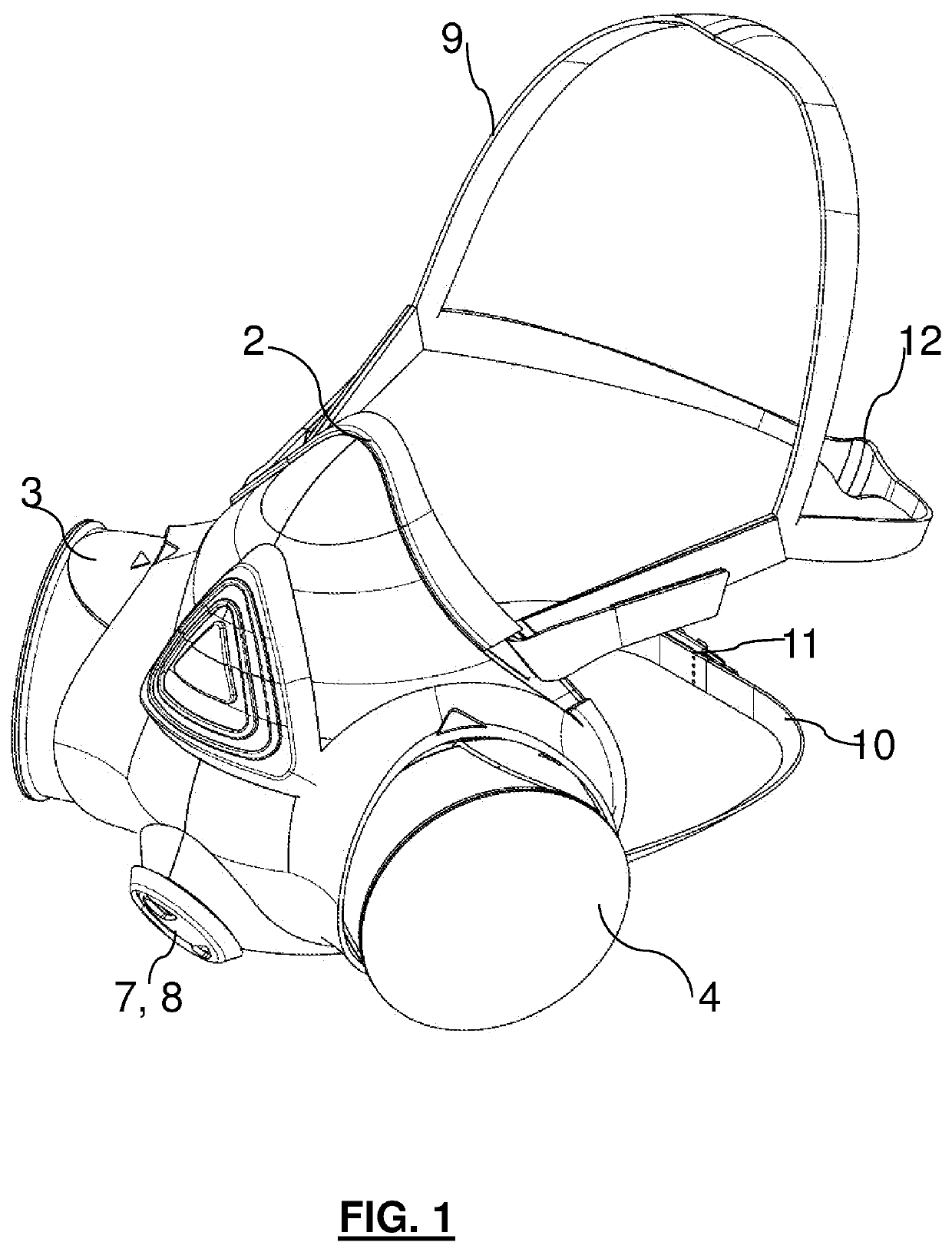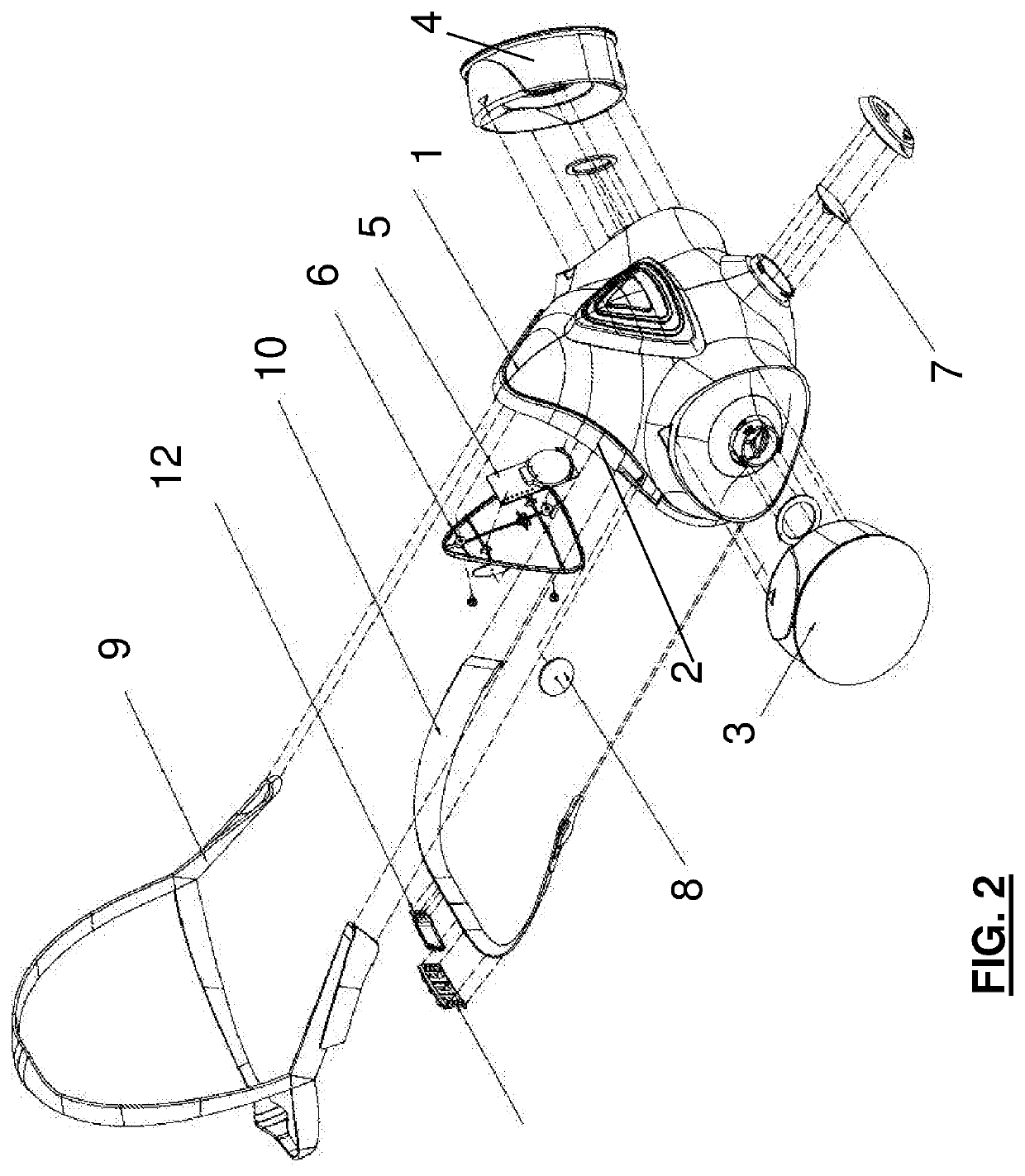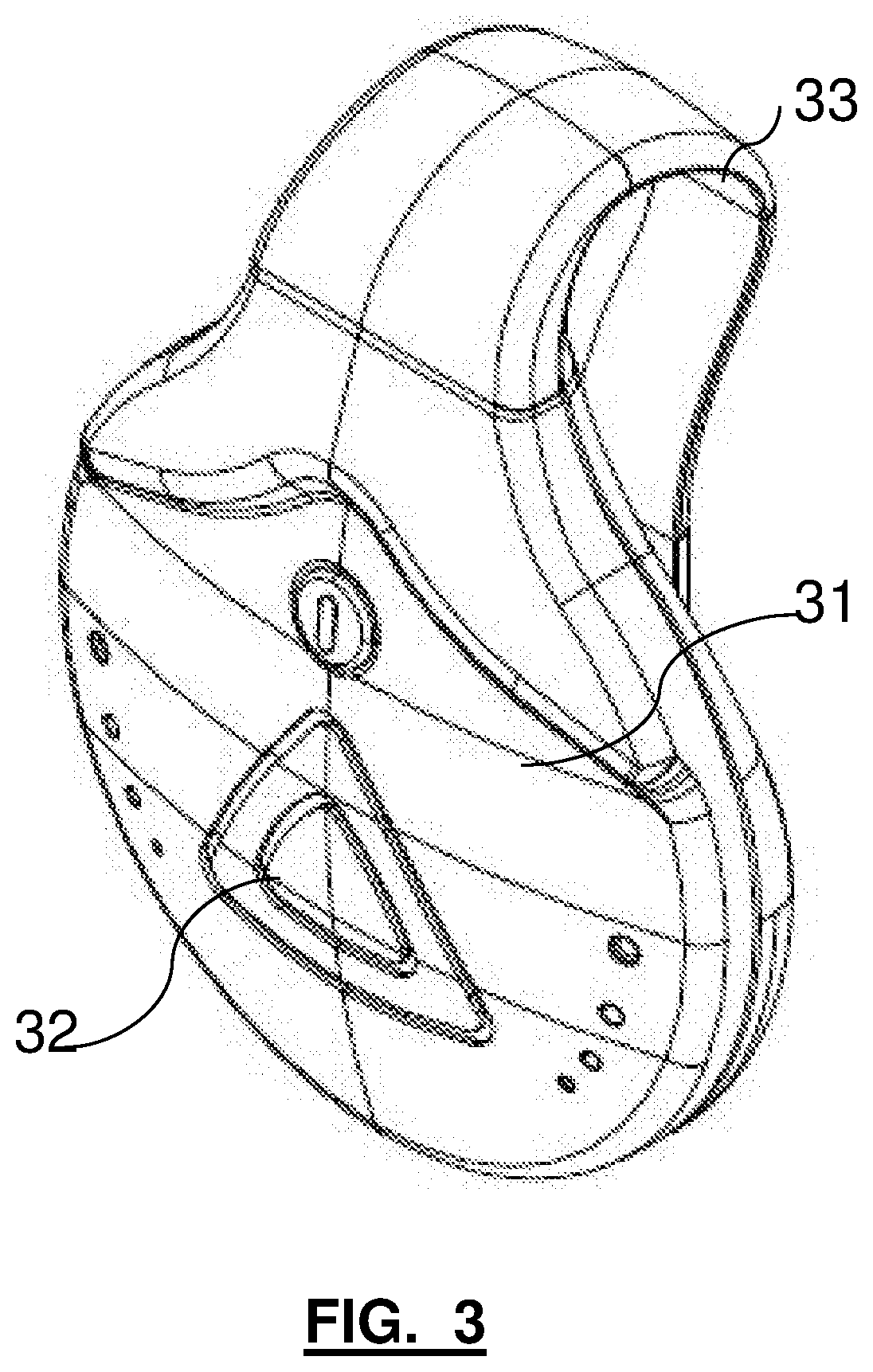Plurisensorial System Adapted for the Prevention of Professional Diseases in the Working Environment, and Method for the Use of the System
- Summary
- Abstract
- Description
- Claims
- Application Information
AI Technical Summary
Benefits of technology
Problems solved by technology
Method used
Image
Examples
Embodiment Construction
[0016]The multi-sense system of the invention essentially comprises:
Protective facial mask
Electronic nose device
Breathing detection device
Data processing and displaying device.
[0017]The protective mask (FIGS. 1 and 2) essentially comprises the following components:
a mask element 1 made of plastic material, e.g. PP or TPE, shaped for application to the front part of the face, in the area including the nose and the mouth;
a seal 2 applied to the rear edge of the mask element to ensure adhesion thereof to the face;
two filtering cartridges 3, 4 applied to the two front side parts of the mask element, and containing removable air filters;
an element 5, 6 acting as a humidity and temperature sensor and also as a switch; it is applied to the upper rear part of the mask, so that, when the mask is worn, the switch will go on, providing a presence indication on the person's face;
inhalation 8 and exhalation 7 valves applied to the front zone of the mask, in front of the mouth, when the mask is w...
PUM
 Login to View More
Login to View More Abstract
Description
Claims
Application Information
 Login to View More
Login to View More - R&D
- Intellectual Property
- Life Sciences
- Materials
- Tech Scout
- Unparalleled Data Quality
- Higher Quality Content
- 60% Fewer Hallucinations
Browse by: Latest US Patents, China's latest patents, Technical Efficacy Thesaurus, Application Domain, Technology Topic, Popular Technical Reports.
© 2025 PatSnap. All rights reserved.Legal|Privacy policy|Modern Slavery Act Transparency Statement|Sitemap|About US| Contact US: help@patsnap.com



